Browse All Articles > Part 2 - Build an immutable backup repository for Veeam Backup & Replication.
For Veeam Backup & Replication, this guide will show you, step by step, how to create and implement a disk-based immutable backup repository from scratch.
In this part: Install Linux on the server.
In this part: Install Linux on the server.
Veeam immutable repository by under a Public Domain Work license
Introduction
Purpose of these articles
You are a Windows Administrator running Veeam Backup & Replication and wish to raise protection against malware attacks and hackers without reverting to shuffle or rotating physical media.This you can accomplish by immutable backups stored on a physical server running Linux. However, you have no Linux servers running and don't want to.
But, like it or not, that is your only option, as the XFS file system is the only one capable of immutability, and XFS only runs under Linux.
Thus, a Linux server is a must. When you have accepted this fact, then what? Where to start?
Like me, you have about zero experience with Linux and, therefore, hesitate to set up a Linux server, indeed in a production environment.
If so, this guide is for you. Here, nothing about Linux is taken for granted.
Sections
The guide has been split in nine parts. This allows you to skip parts you are either familiar with or wish to implement later if at all.- Part 1 - Prepare the install of Linux
- Part 2 - Install Linux on the server
- Part 3- Prepare the Linux server for Veeam
- Part 4 - Create the immutable Veeam backup repository
- Part 5 - Prepare for backup of the Linux server itself
- Part 6 - Backup of the Linux server itself
- Part 7 - Bare Metal Recovery of the Linux server
- Part 8 - Tighten security on the Linux server (MFA/2FA)
- Part 9 - Maintenance and deactivation/reactivation of MFA/2FA
Requirements
You are familiar with:- the usual tasks administering at least a small network with one Windows Server
- Veeam Backup & Replication and have it installed and running
- the command line - from PowerShell, Command Prompt, or even DOS
Veeam Backup & Replication is assumed to be of version 11 or later. It can be a licensed trial or paid version or even the free Community Edition.
XFS and the virtual air gap
The XFS file system was introduced by SGI in 1993 for its IRIX 5.0 operation system which was based on UNIX System V Release 4.XFS was ported to Linux in 2001. As SGI ceased operations in 2009, Linux is today the only operating system supporting XFS.
Why is this important? Because XFS offers immutability:
Once the file is set immutable, this file is impervious to change for any user. Even the root cannot modify, remove, overwrite, move or rename the file. You will need to unset the immutable attribute before you can tamper with the file again.For the details about handling this, study Dan Nanni's blog on Xmodulo:
How to make a file immutable on Linux.
Other Linux file systems offer immutability, but only XFS also supports *reflink*, a technology that allows for very fast cloning of files. Veeam has assigned *reflink* its own label, Fast Clone, and have specified this as a requirement for an immutable repository.
The ReFS file system of Windows also supports reflink, but not immutability. This is why Windows Server cannot host a hardened repository.Applying immutability to your backup files hosted on a physical server introduces a virtual air gap in your backup chain, protecting the backup files from anything else than direct physical access. This way, the backup files will be protected from any attack caused by advanced malware or possible hackers.
The effect is the same as if you back up to tape or DVD and, when done, remove the media from its drive.
Part 2. Install Linux on the server
In this section, we will install Ubuntu Server on the server machine using the USB drive (or DVD) we prepared in Part 1.Required hardware
These are the humble specifications to meet:- A decent 64-bit server with at least two drives (hard disk or SSD. USB drives cannot be used).
Yes, that's all. The requirements for Ubuntu Server are very modest:
- CPU: 64-bit, 1 GHz or better
- RAM: 1 GB or more
- Disk 1: 20 GB or more for the system
- Disk 2: Large enough to hold your expected backup files
During installation, also a video monitor and keyboard is required.
This means that just about any server of decent quality, you may have in stock, can be used, indeed for an initial test. If you have no server, a small server like HPE MicroServer will do.
Required network
Neither should the network requirements represent a challenge for you:- An internet connection is required for downloading updates to the installer
- A fixed IP address (or a hostname and DNS entry) should be allocated for the machine and held ready
- The address of the gateway to use
- The addresses for the nameservers to use. Use those of your local network or those of your ISP. If none of these is known, fall back to those of Google:
8.8.8.8 8.8.4.4
Note that for network configuration of Ubuntu Server, the subnet mask (netmask) must be specified using the CIDR notation having this format:
like:xxx.xxx.xxx.xxx/p
This is normally not used in the Windows world, so be prepared.192.168.1.0/24
More info at CertificationKits - IP Addressing & Formats & Subnet Masks
Install Ubuntu Server
When ready, insert your install media and boot the machine.When booted, GRUB will load. This is a widely used Linux boot loader allowing you to do various things at boot time, like selecting between several OS installs.
We have only one wish - to install Ubuntu Server - which is selected by default:
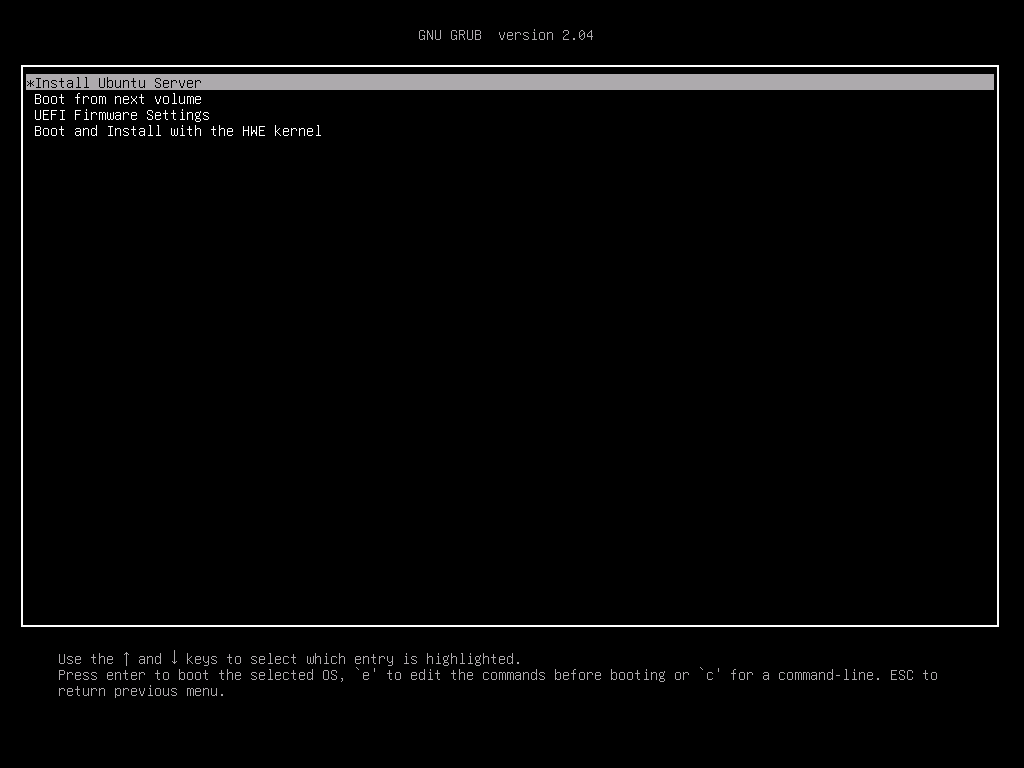
Press Enter to load the Ubuntu Server welcome screen:
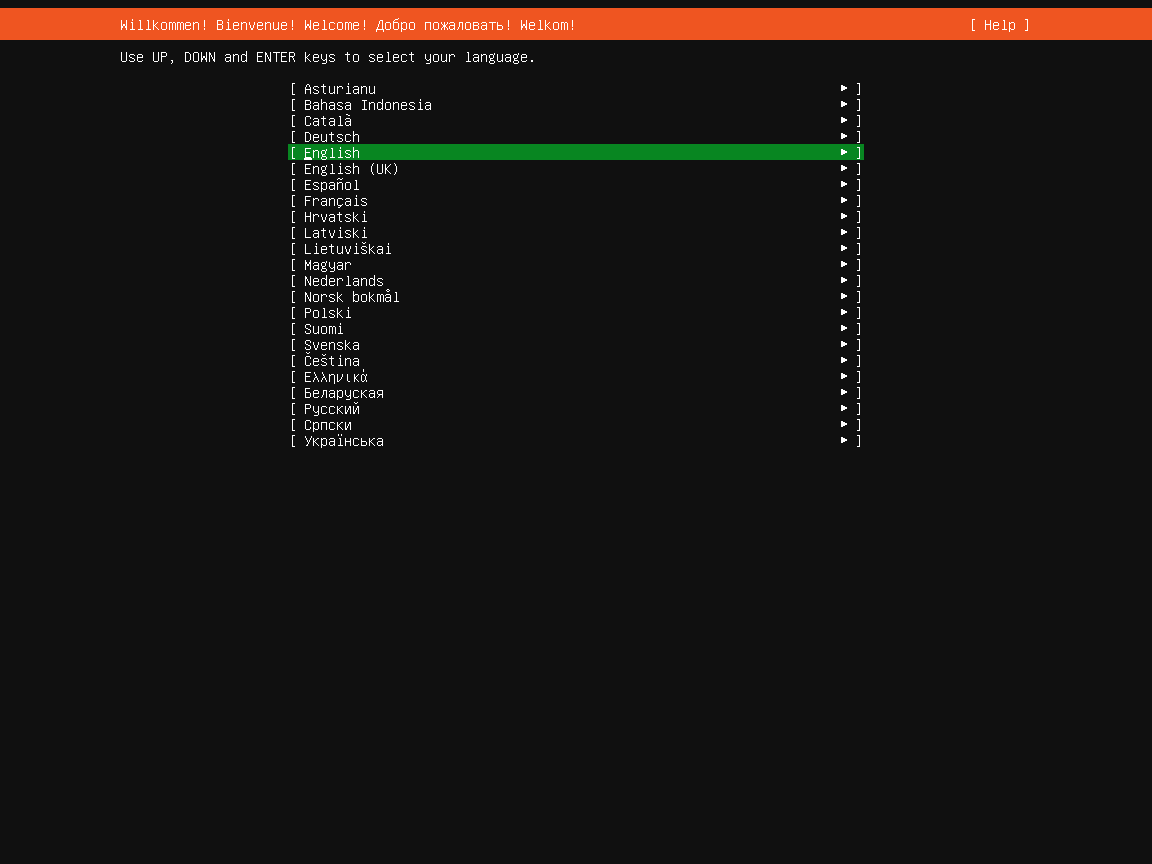
Select the language you wish to use. Here English (US) is chosen.
Press Enter. This will open the keyboard configuration screen:
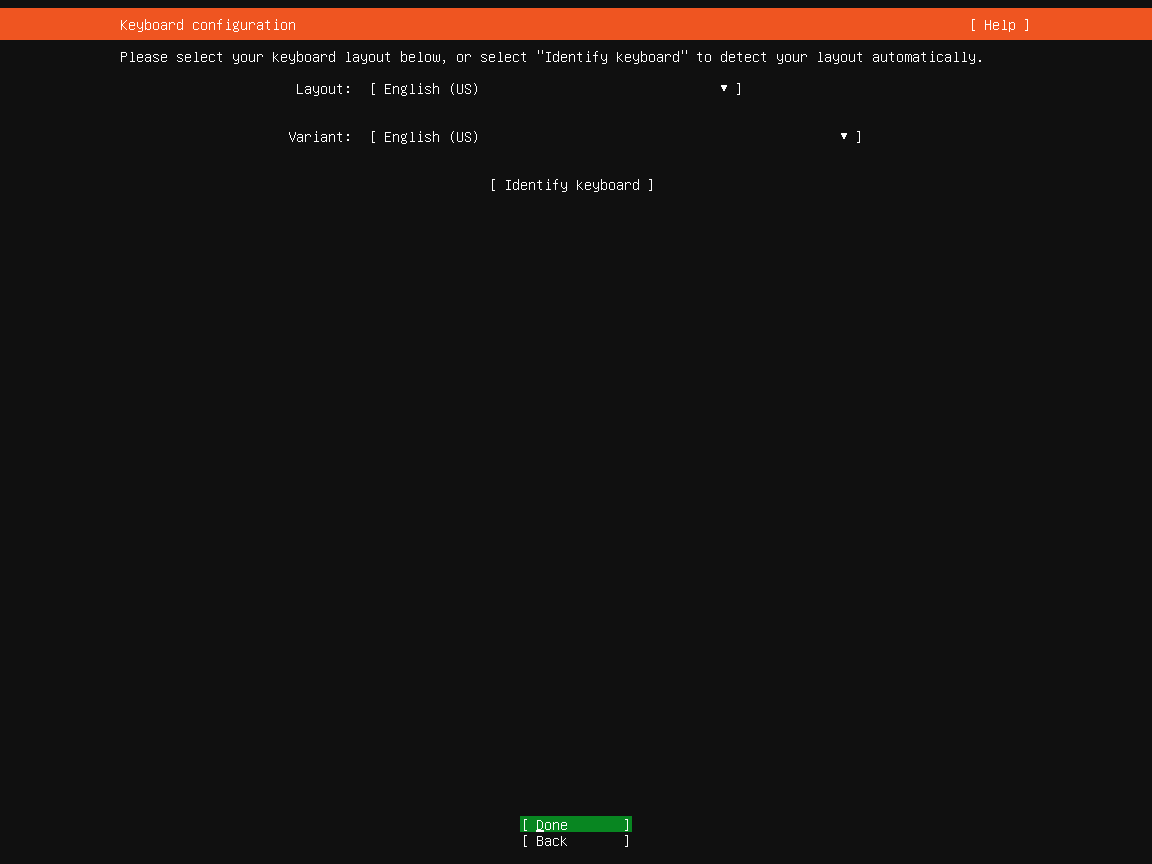
Select the keyboard layout and tab to make Done at the bottom have a green display.
Press Enter to open the Network connections screen.
Network
The Network connections screen lists the options for connection to the network.- If the machine has one network interface installed, this will be listed.
- If the machine has two or more network interfaces installed, these will be listed as well as an option to bond (team) these.
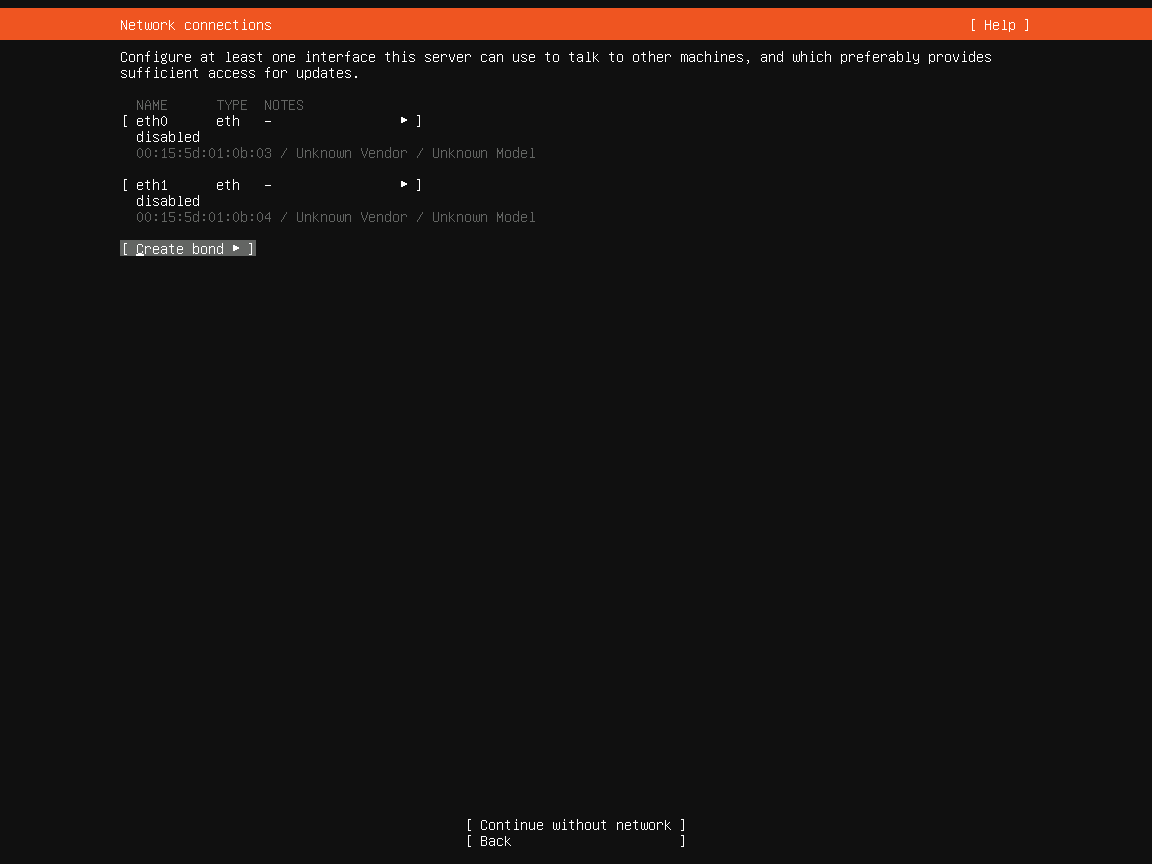
Press Enter and the Create bond window opens:
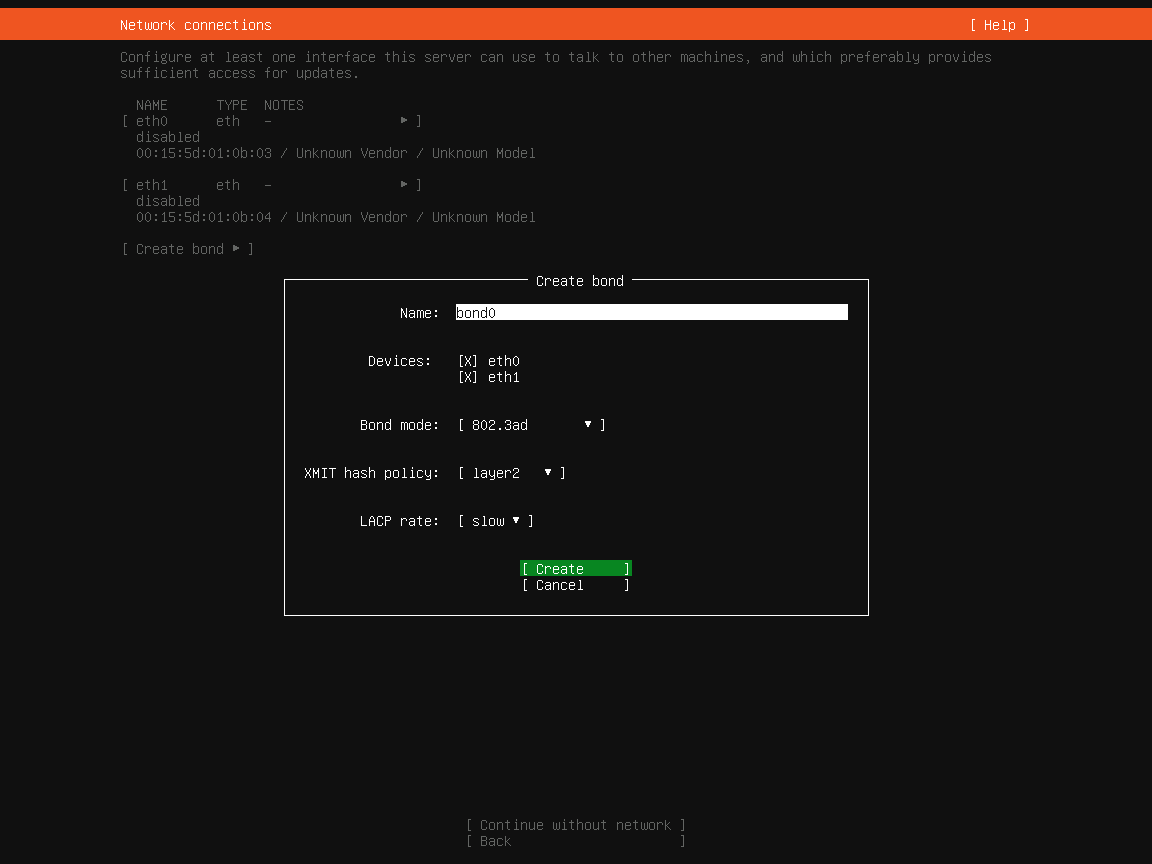
Use the default settings, unless you have some special requirement. Tab to Create and press Enter to display the modified settings:
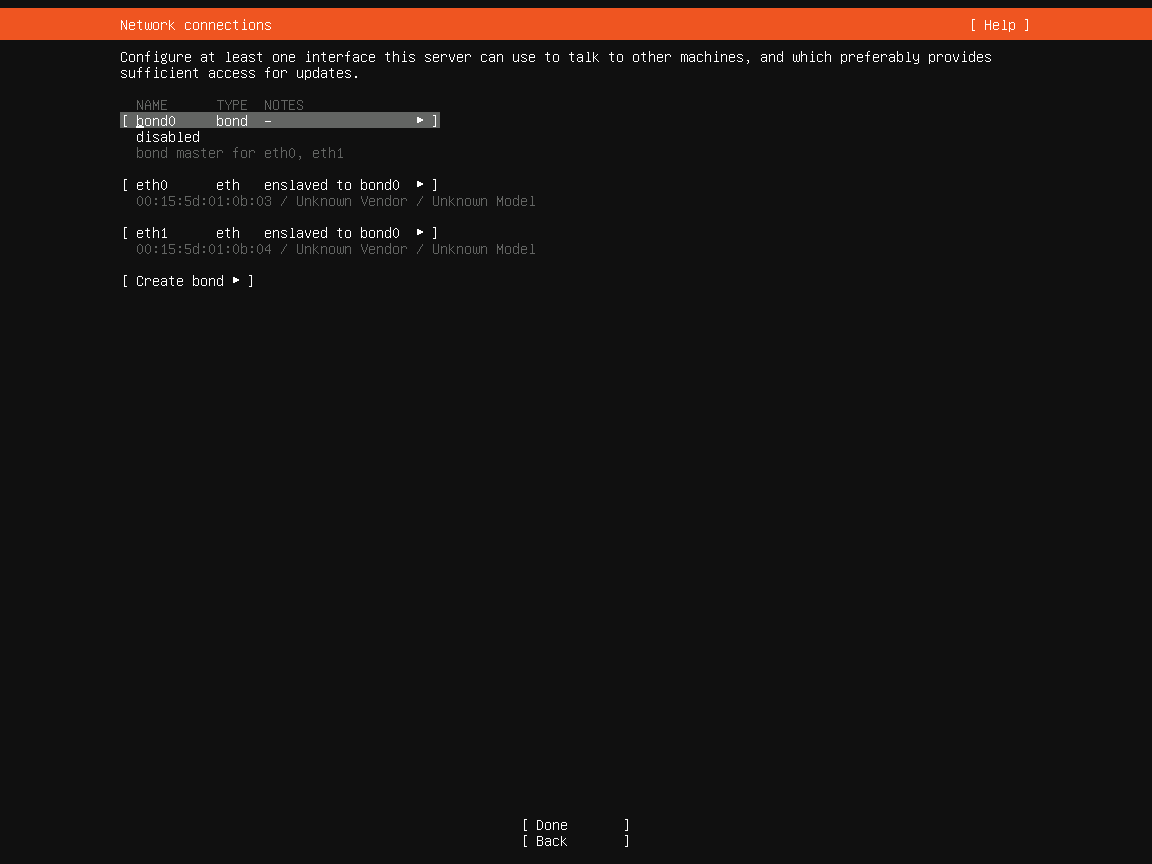
Select the bond and select in the pop-up menu Edit IPv4:
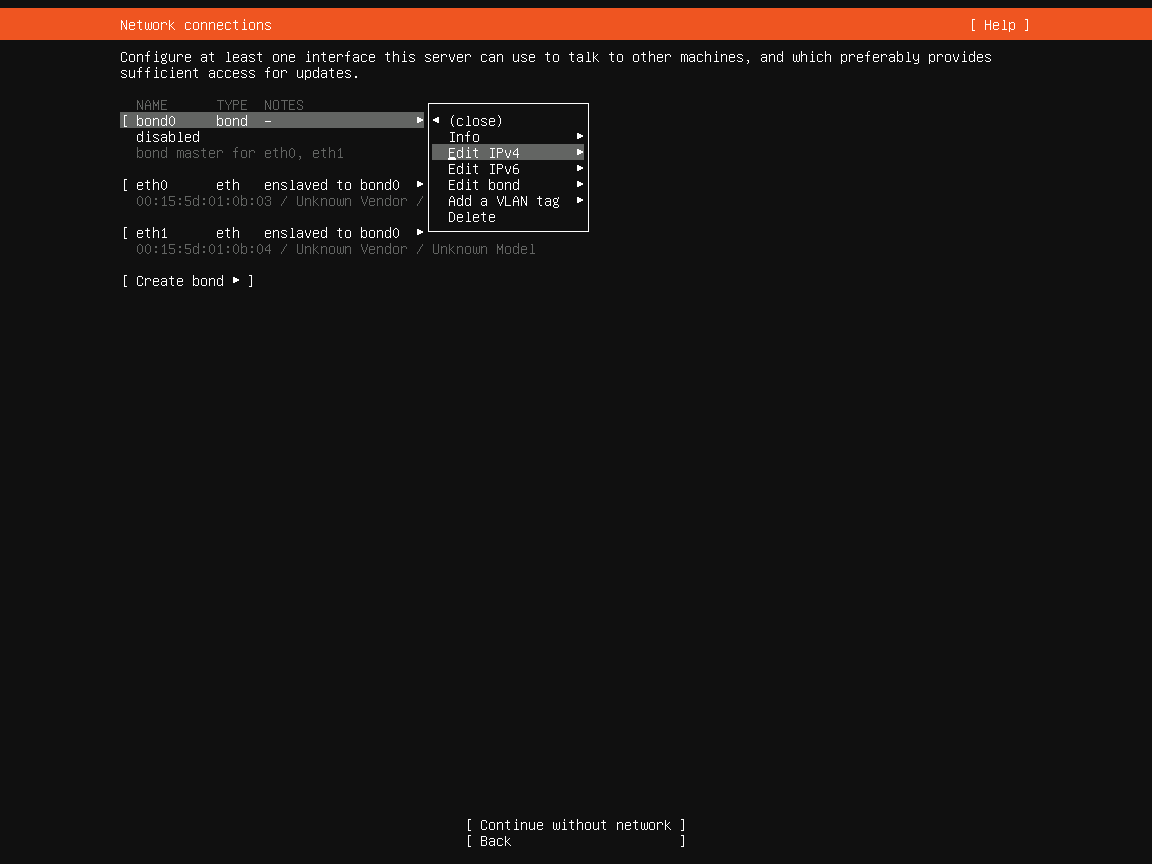
This will allow you to configure it using DHCP or a fixed address. The latter is what want, so select Manual:
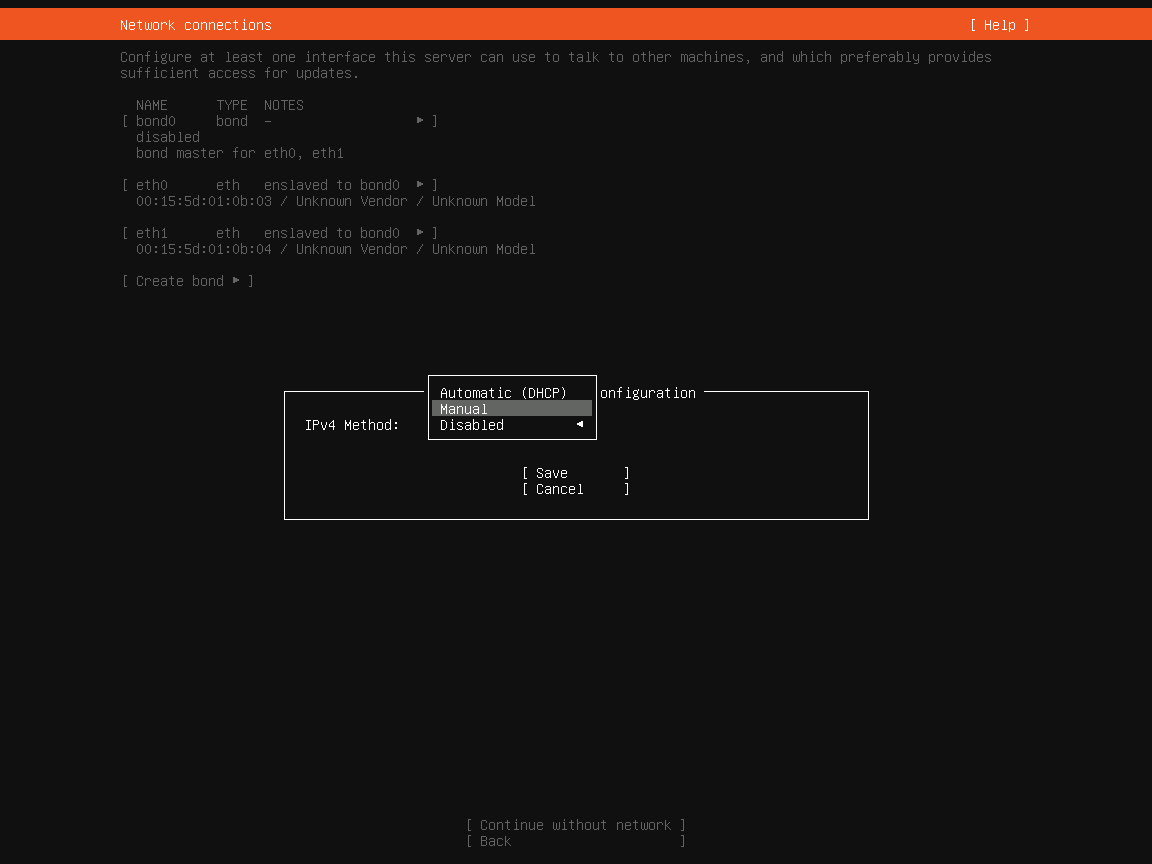
Press Enter, and you can edit the manual bond configuration:

Above the configuration has been filled in with typical values. Carefully adjust these to match your environment exactly.
When ready, tab to Save and press Enter. The network configuration will now list your bond (or single network interface) having a static address:
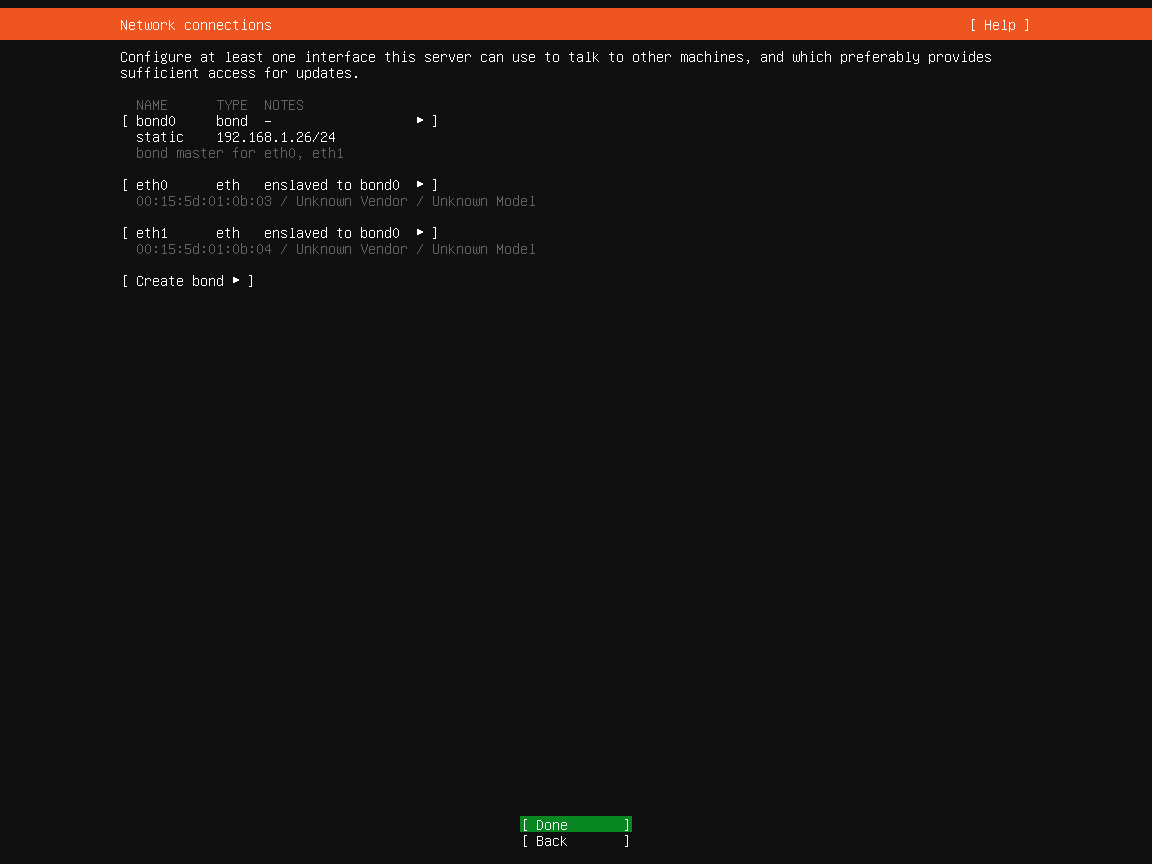
Tab to Done and press Enter, and you can configure a proxy:
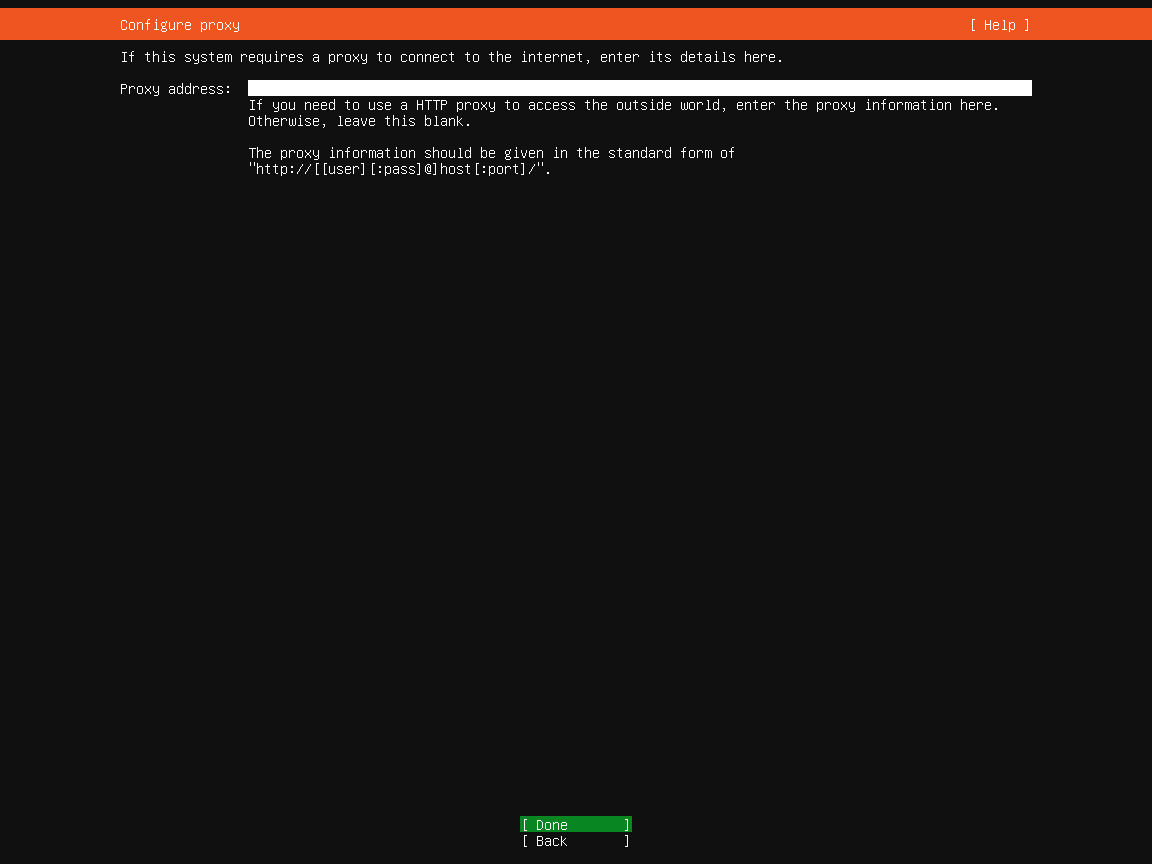
Leave blank for none, tab to Done and press Enter to reach the window where you can specify which archive mirror to use:

A mirror is a server hosting updates and optional installs, which you will need. By default, the closest to you has been selected. Use this. Tab to Done and press Enter to reach the disk configuration screen.
Storage (disk)
The Guided storage configuration screen makes it smooth to configure the system disk, which is all we need at this point: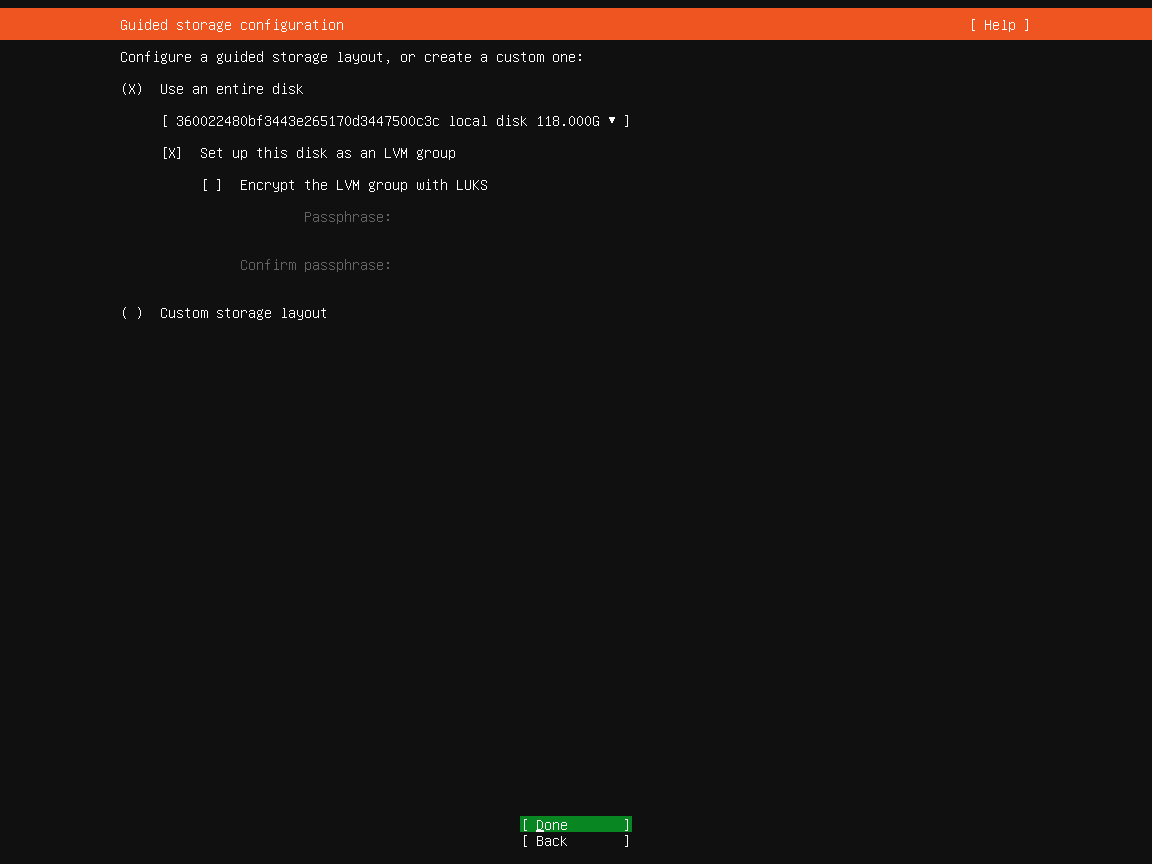
At top, select to Use an entire disk and select the (small) disk to hold the operating system. Then tab to Done and press Enter to open the Storage configuration status:
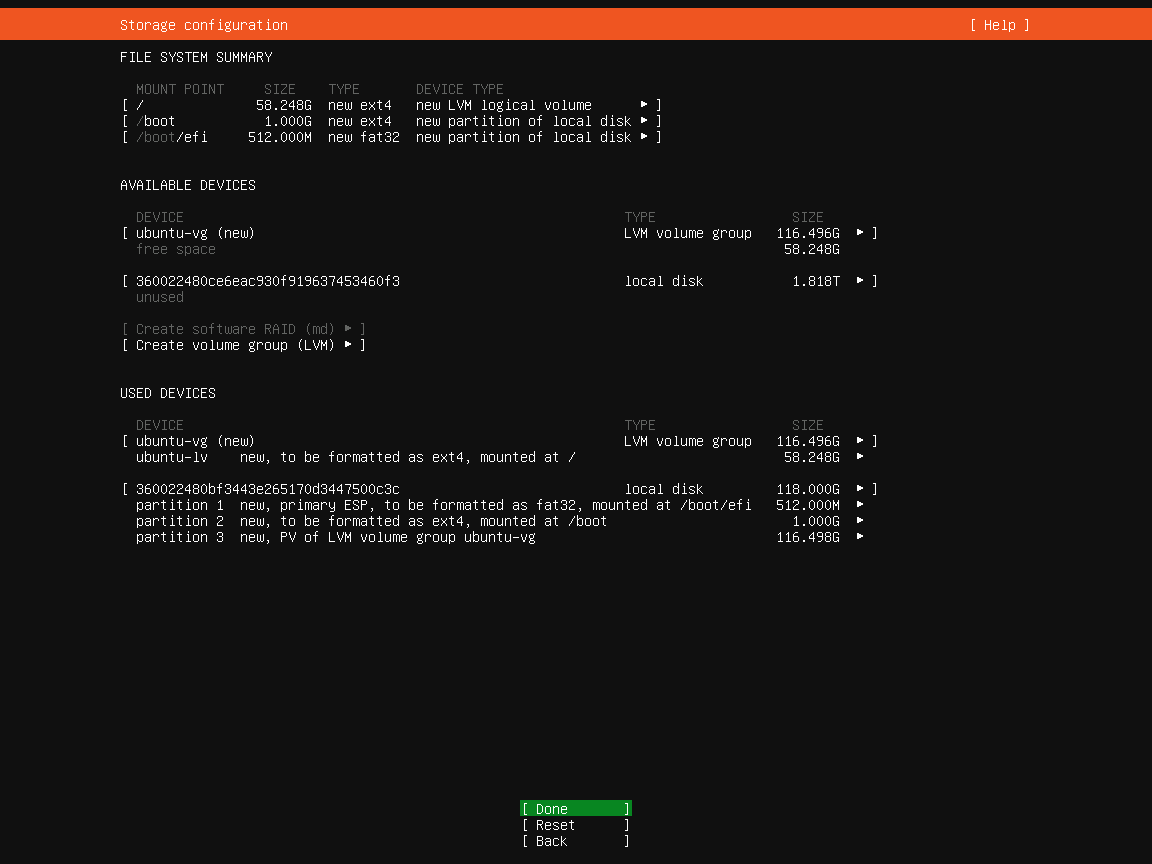
The important part is the top block, FILE SYSTEM SUMMARY, which should list the partitioning of the boot disk. If this doesn't seem correct, tab to Back and correct. Nothing has yet been written to the disks, so you can go back and forth as needed until it is correct.
If everything is OK, tab to Done, press Enter, and the confirm window will pop up:
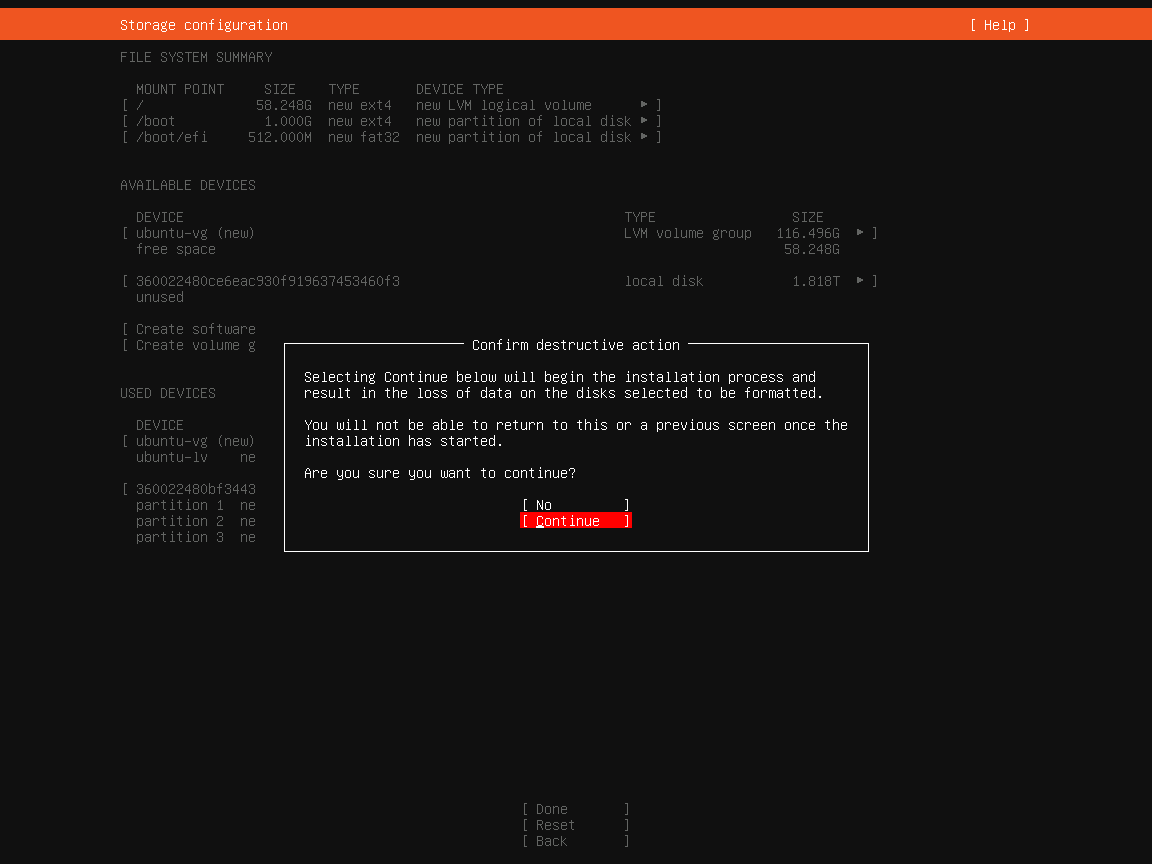
If OK, tab to Continue and press Enter to reach the final parts of the initial setup.
Profile
The Profile setup screen lets you:- Enter the name of the server (the hostname)
- Create your administrator account
This is the account you later will use in Veeam Backup & Recovery Console.Fill in the fields like this example:
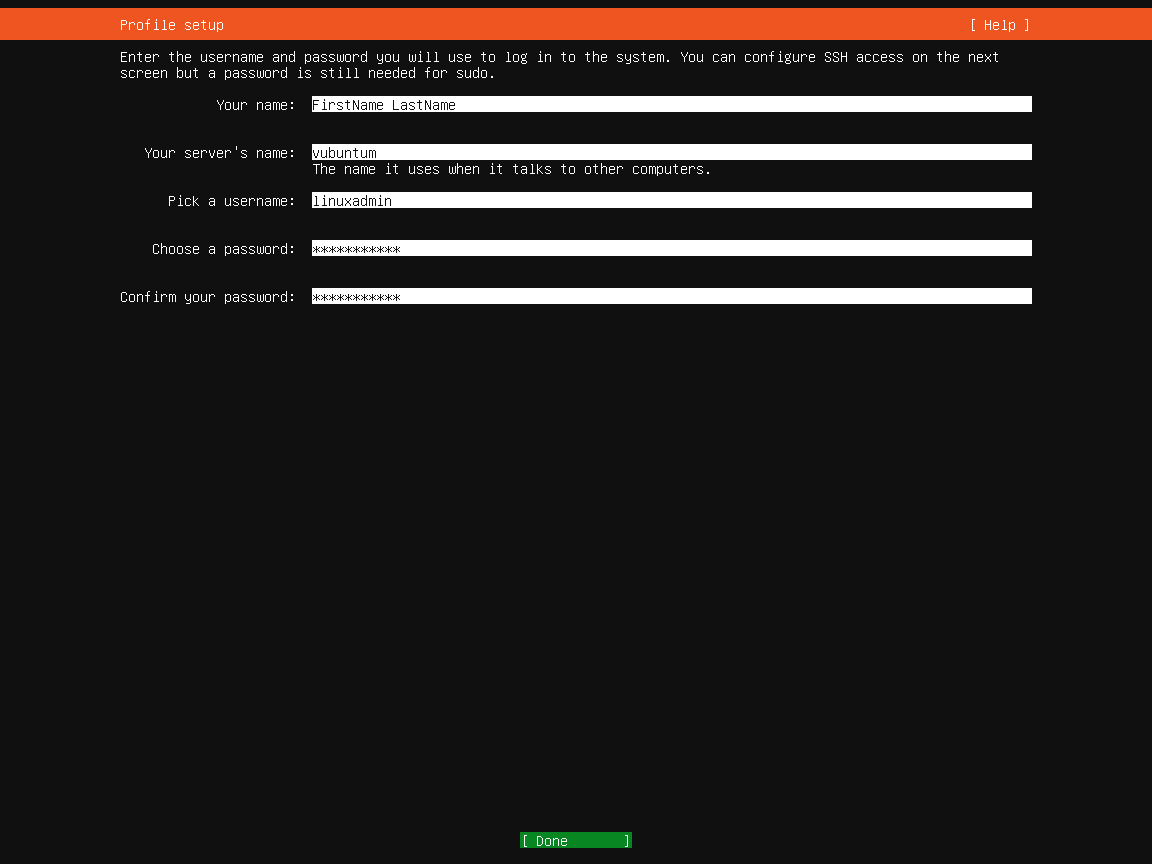
Tab to Done and press Enter to proceed to the SSH screen.
SSH is an important option. It must be selected, or Veeam will not be able to set up the Linux agent and the repository. Further, SSH allows you to securely remote control the server from, say, PowerShell after the initial installationInstall SSH is selected by default:
If you are very concerned about security, SSH may later be protected by MFA/2FA authentication, be deactivated, or even removed.
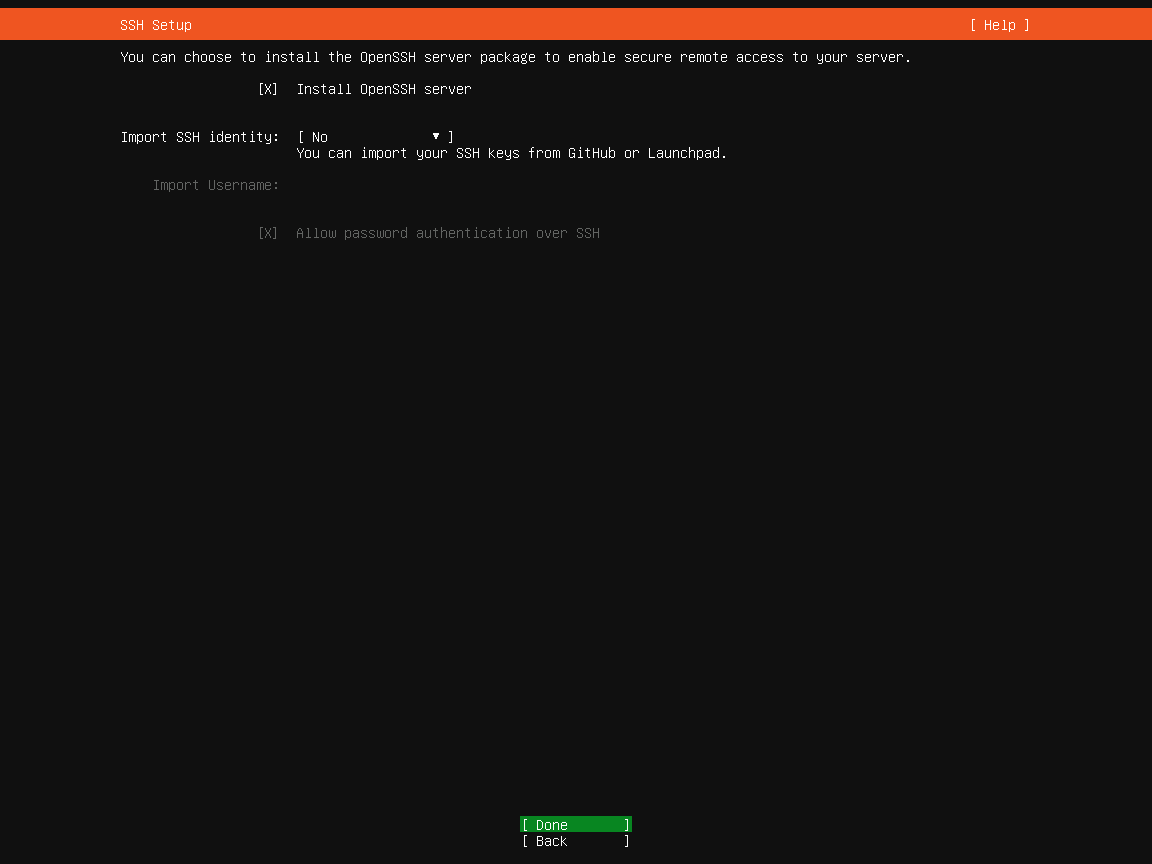
Tab to Done and press Enter. This will open the list of Featured Server Snaps which are supplemental programs and features optionally to be included in the initial install:
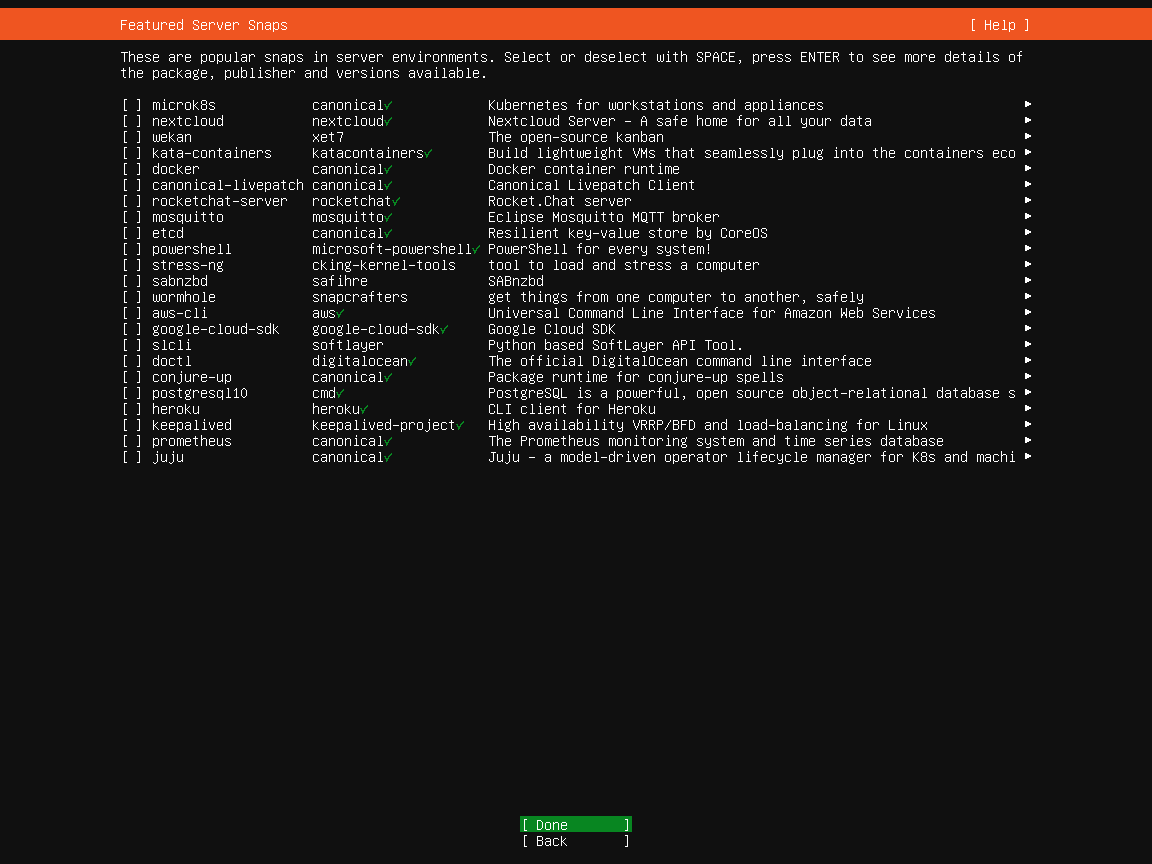
Of these, you will need none for this project, thus move to Done and press Enter.
The installation will now proceed and take a little time. When ready, the end of the install log is displayed:
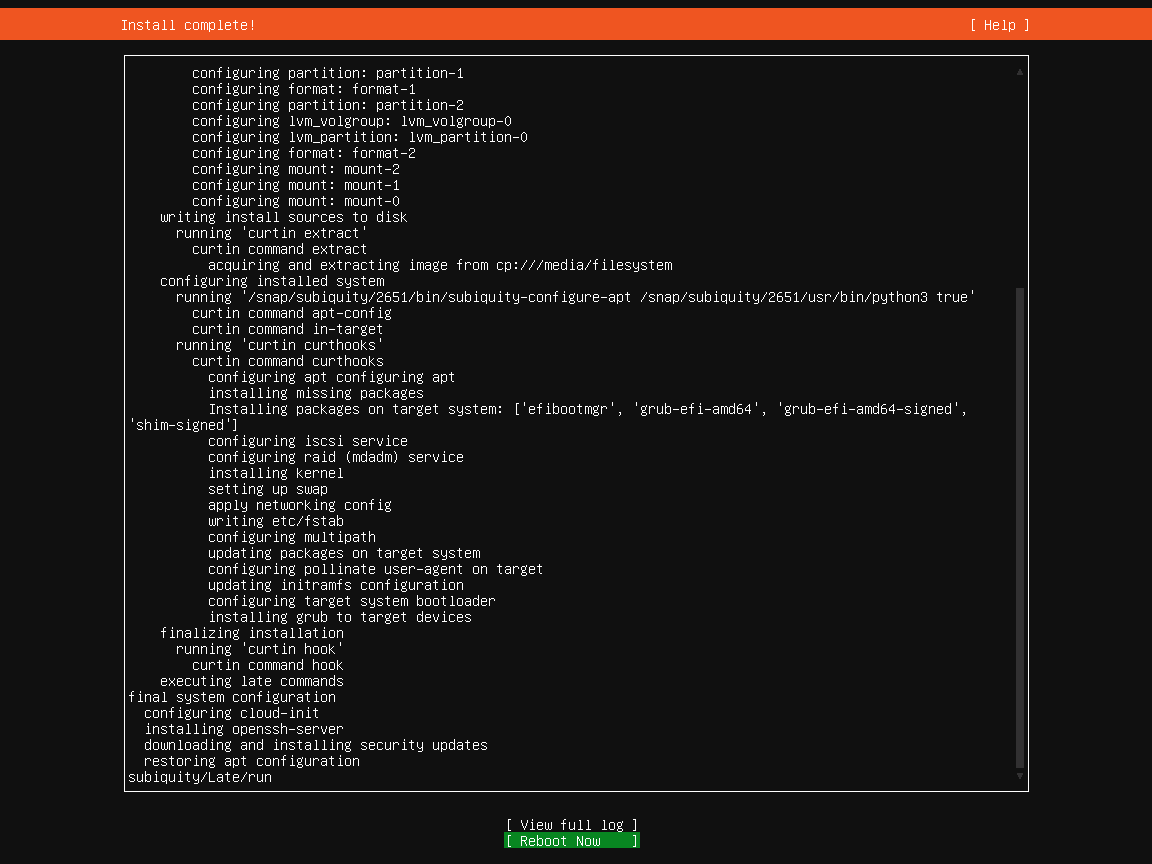
Tab to Reboot, press Enter, and remove the installation media:
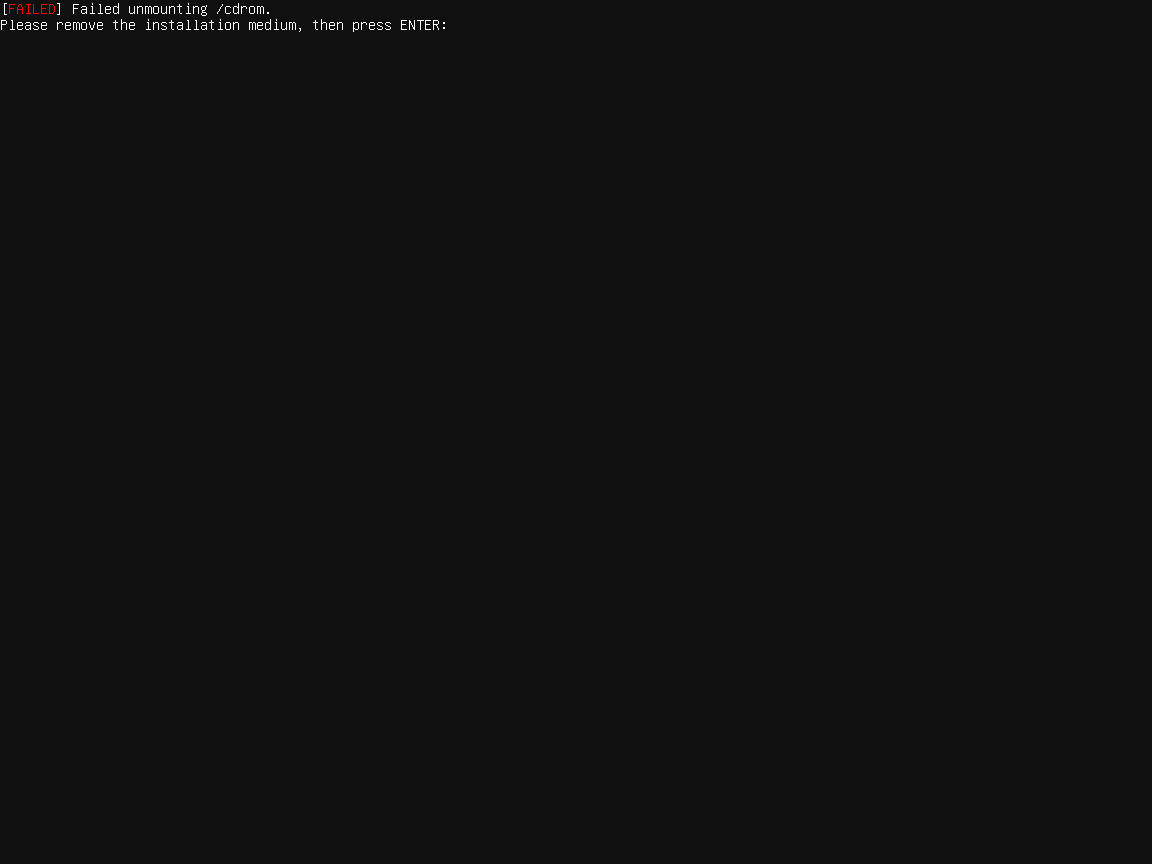
Installation ready
After the reboot:
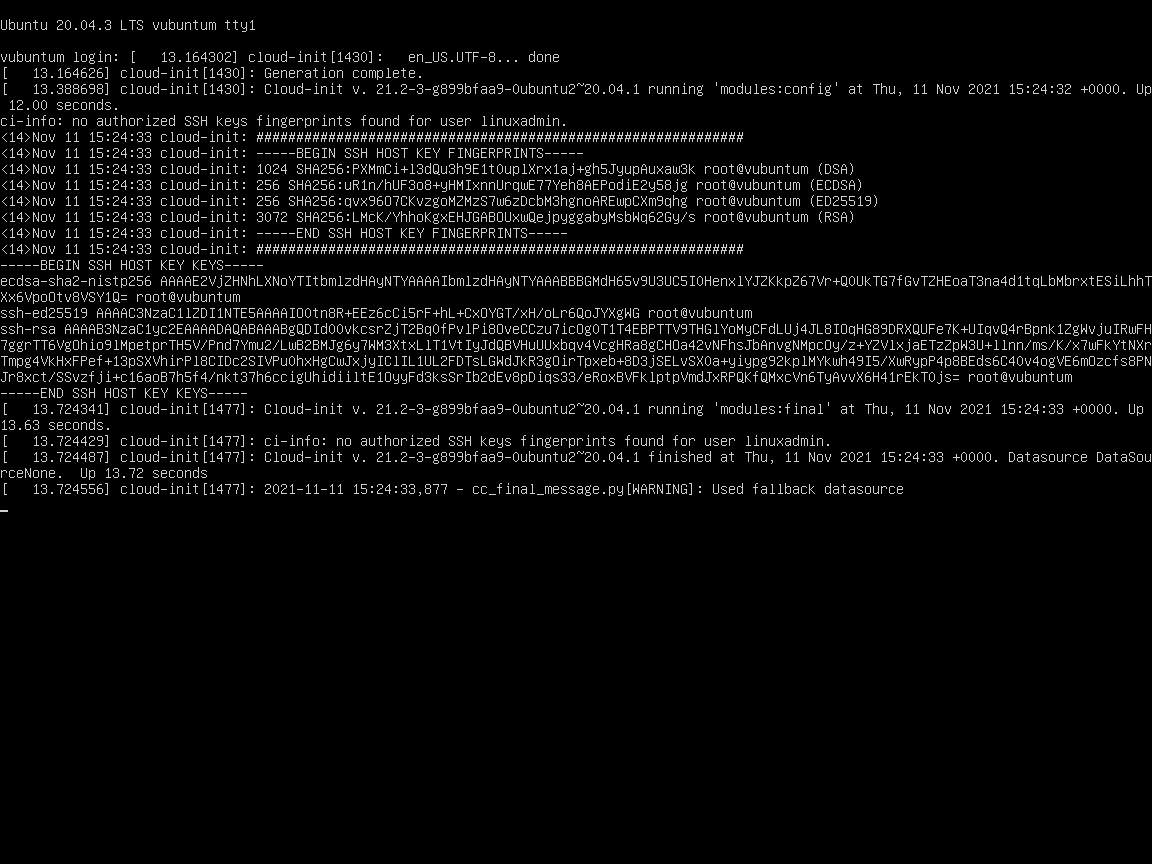
the text listings will settle after a while, and the minimalistic login message of Linux is displayed:
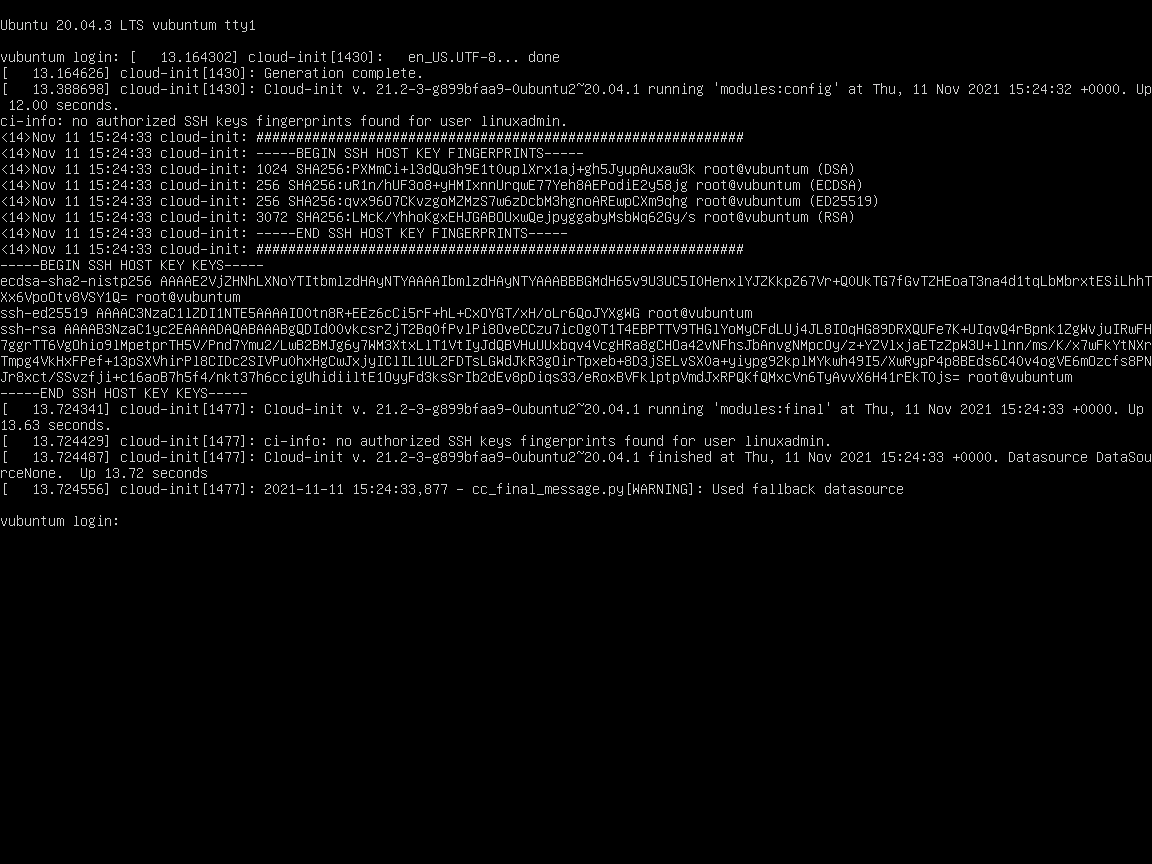
To log in, type your account name and then your password (which will not be shown):

Enjoy the welcome message!
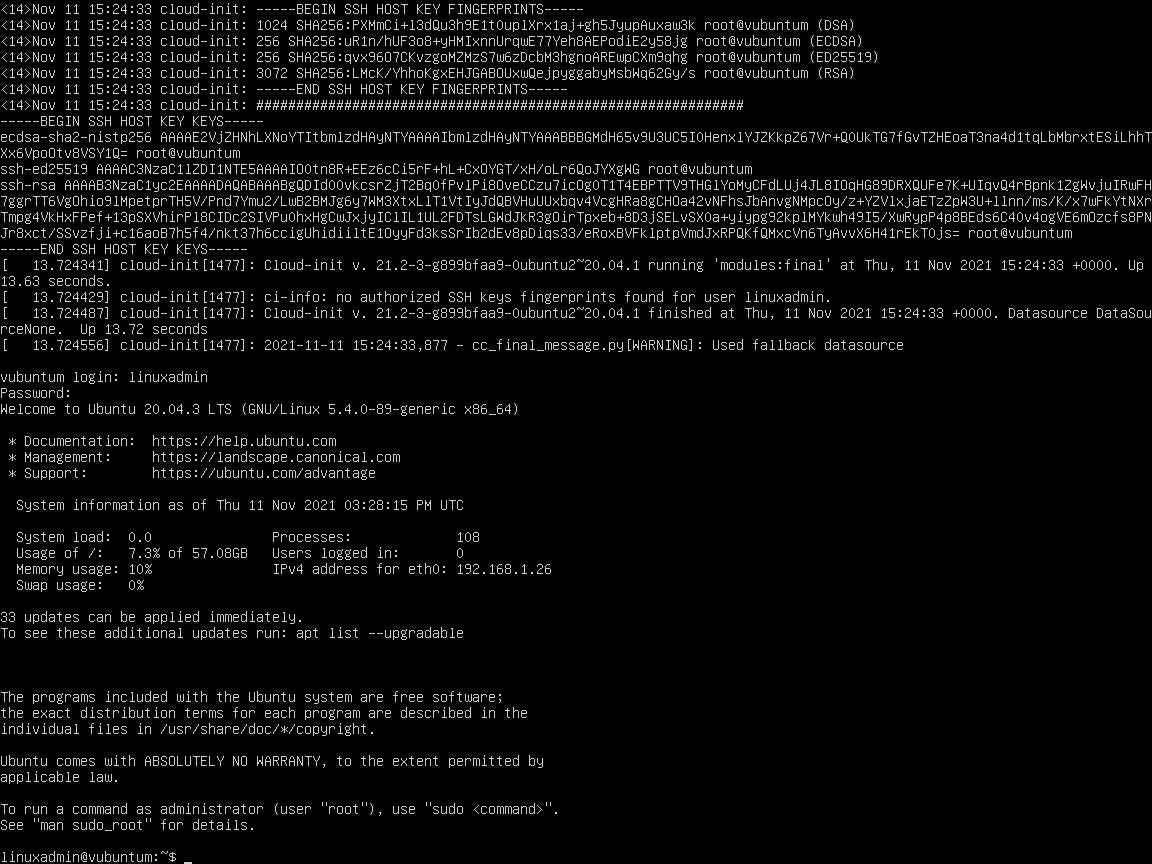
What you see on the Linux screen it the Bash Shell - a command-line interface for Linux similar to PowerShell for Windows.
Remote control
As we above included SSH Server in the installation, we will be able to connect to and remote control the Linux server from an SSH client.This is where PowerShell comes in; in addition to all the other tasks, that PowerShell can handle, it can act as an SSH client, and that we will utilise onwards.
The command is this simple:
ssh username@hostnameor:
ssh username@ip-addressFor the very first attempt, it will ask for confirmation about the key to use to make the connection safe. Type yes (not just y), and it will prompt for the password.
Enter the password, and the welcome message will be listed:
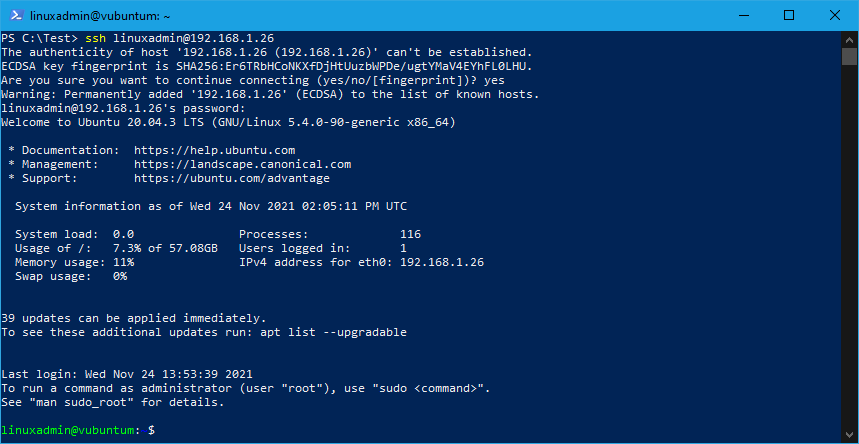
From now on, we will use PowerShell to interact with the Linux server, as that allows for easy copy/paste of commands and console output.
Conclusion
The server now has a basic Ubuntu installation and is ready for the next step - preparing it for installation of the immutable backup repository - which is explained in detail in Part 3 of this series:Part 3 - Build an immutable backup repository for Veeam Backup & Replication.
I hope you found this article useful. You are encouraged to ask questions, report any bugs or make any other comments about it below.
Note: If you need further "Support" about this topic, please consider using the Ask a Question feature of Experts Exchange. I monitor questions asked and would be pleased to provide any additional support required in questions asked in this manner, along with other EE experts.
Please do not forget to press the "Thumbs Up" button if you think this article was helpful and valuable for EE members.

Have a question about something in this article? You can receive help directly from the article author. Sign up for a free trial to get started.


Comments (2)
Author
Commented:Author
Commented: